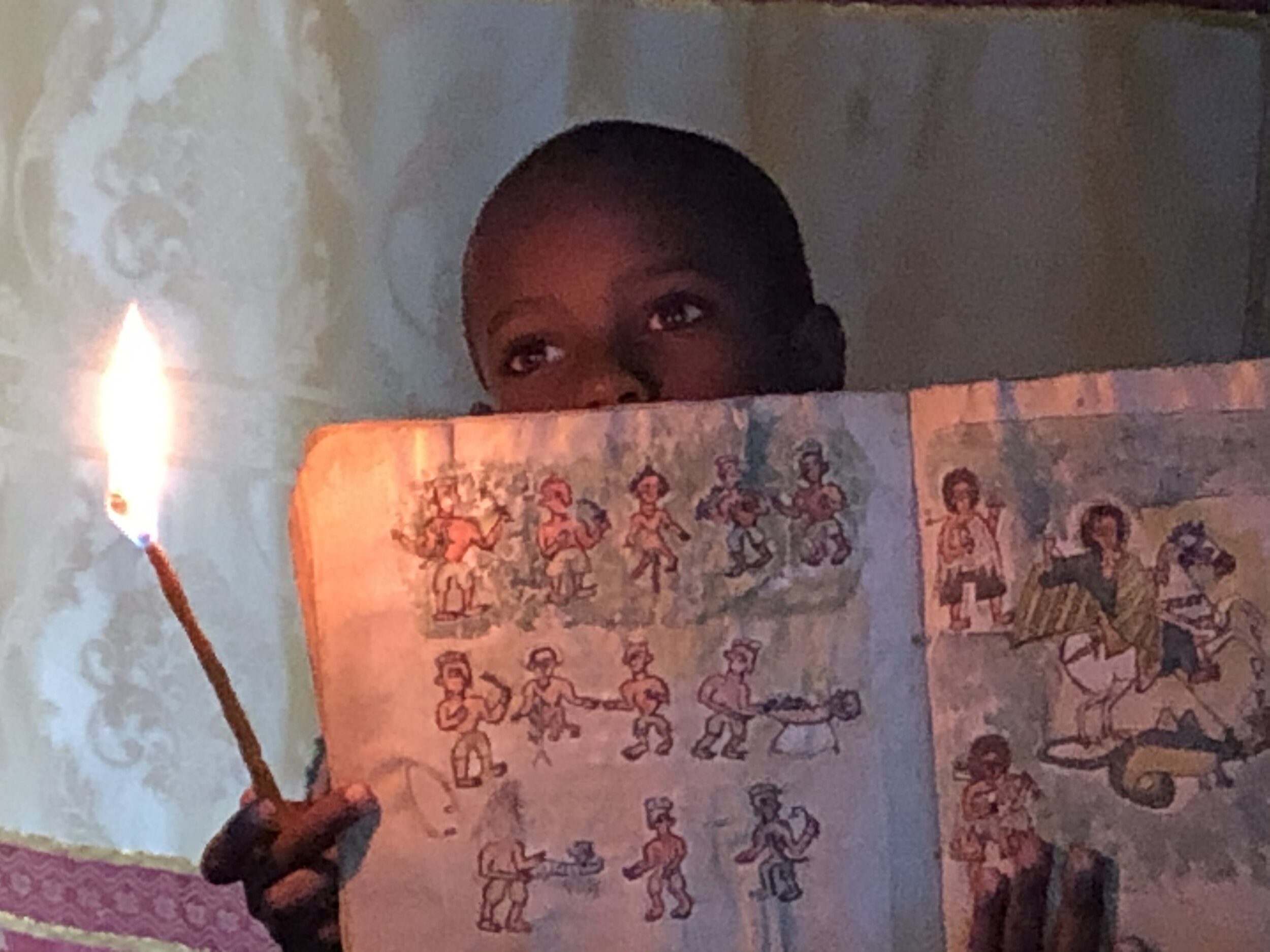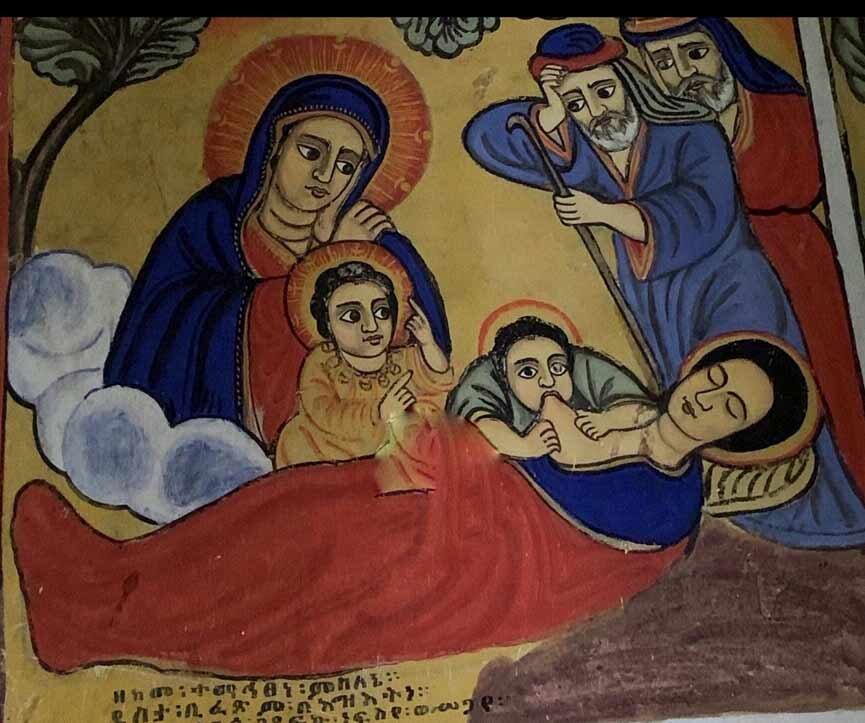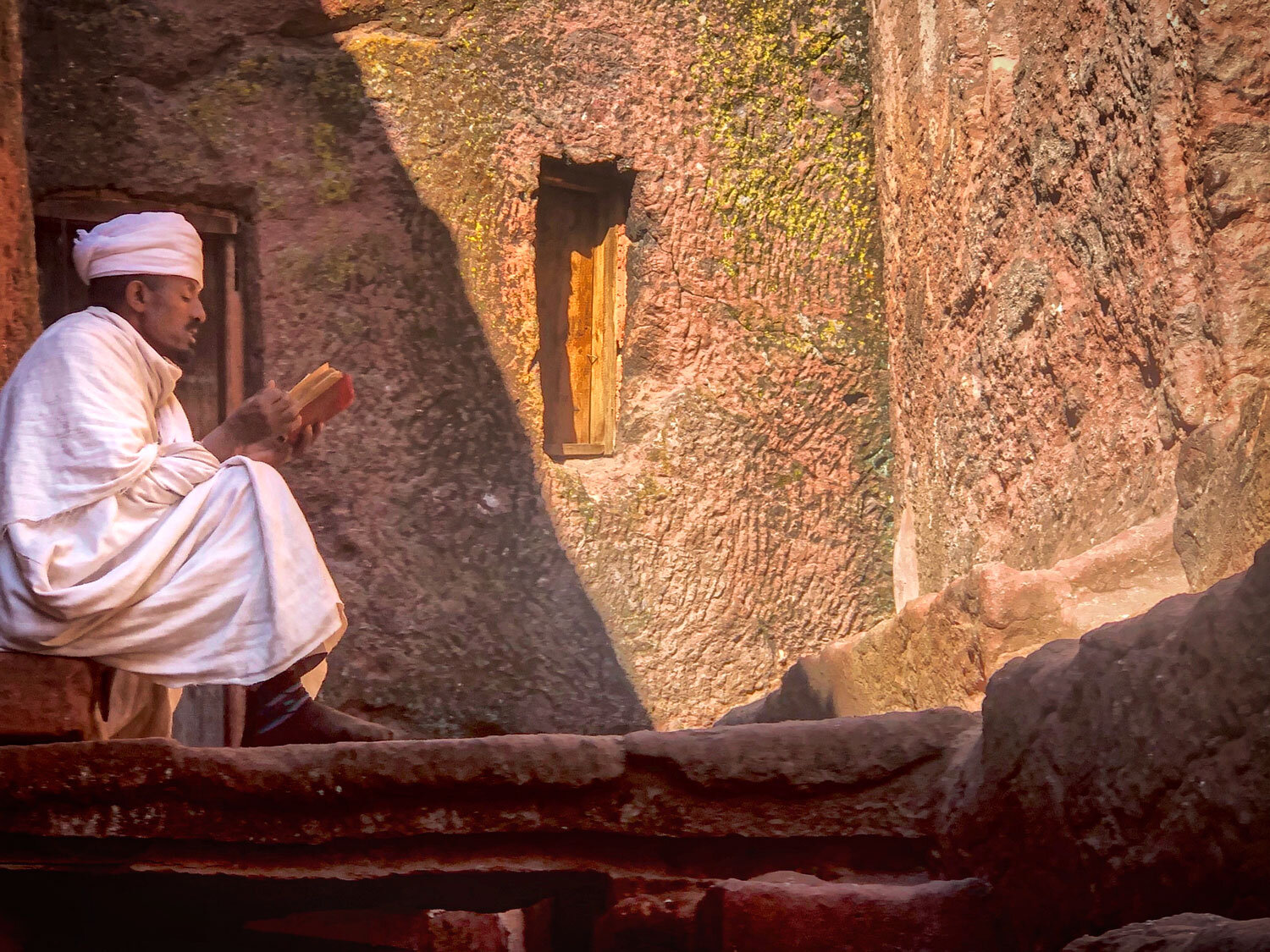By the Hands of Angels
Saint george Church
In this piece on Ethiopia I wish to offer a glimpse into its rich Christian Orthodox heritage, in particular, its renowned churches in Lalibela. These 12th century, rock-carved, monolithic structures, such as St. George above and below, make for architectural wonders. Like Machu Picchu, Angkor Wat, Petra and Teotihuacan, they are on the UNESCO World Heritage list. How these eleven churches, some carved below ground, were built, remains a mystery for many. Given that this occurred within a short time span, contributes to the legend that they were created “by the hands of angels.”
Part of my fascination with Ethiopia, once known as Abyssinia, and never colonized by European powers (except Italy for a short period), stems from my personal connection with Orthodox Christianity. As a teenager in Beirut with a Greek Orthodox Lebanese step-father, I distinctly recall the fanciful robes and long beards of priests as they slowly proceeded, gently swinging chalices of incense, through the candle-lit church. (Such an ancient, almost mystical experience, couldn’t have been more different from going to an Episcopalian church as a child.)
Detail in church
The Amharic people, maintaining centuries of traditions, such as weekly fasting and countless pilgrimages, are amongst the most devout Christians in the world. Their most important pilgrimage is to Lalibela, a town in the northeast of the country. Such pilgrimages might parallel those to the Vatican or Mecca, albeit on a smaller scale. Its site is named after King Lalibela, who, in the 12th century, sought to recreate a second Jerusalem after its sacking by the Moslems. In the steps of the powerful and extensive Axumite empire, he was responsible for a staggering assemblage of churches, many interconnected by meandering paths, bridges and small tunnels. A true maze.
According to experts, these churches are clustered in two major groups, one representing the earthly Jerusalem, and the other, the heavenly Jerusalem. Between them is a trench representing the River Jordan. What makes them so fascinating and unique is that they were all hand carved out of basalt and volcanic tuff.
The last to be constructed — or rather carved, and most admired today, is St George. In the shape of a cross, standing alone and below ground level, it has an unrivaled, austere elegance. Intrigued by it, one can’t help but be drawn to making the descent to its narrow entrance. Was this to protect it from invaders?
Unlike entering a Gothic church where one’s eyes are drawn upwards to the light streaming through richly colored stained glass windows, these offer an almost primeval, womb-like experience. In the photograph below is a much more “rough cut” one. As the last church built “they really got it right with St. George,” said our guide with a modest smile.
How did Ethiopia come to adopt Christianity? Dating back to the 4th century AD, the powerful and expansive Kingdom of Axum was, after Armenia, the second country in the world to convert. It was also the first to use the image of the cross on its coins. Apparently, it was St. Frumentius or Abba Selama, "Father of Peace", from Tyre, Lebanon, who converted King, Ezana in 310 AD. According to some, the Gospel reached Ethiopia as far back as the 1st century when Philip the Evangelist traveled from the Mediterranean to the Horn of Africa, baptizing those along the way including royal officials. It is also important to note that later it broke its ties with the Coptic Church in Egypt.
Other faiths also continued to flourish such as the ancient Jewish one. Today, only a few of those who are referred to rather negatively as the Falasha Jews remain. Here below is a Jewish community center and two women participating in a service.
At Lalibela, with the stunning backdrop of the ancient carved rock, often enhanced by golden-colored lichen (a concern for the stone’s durability) we met monks, nuns and priests engaged in traditional activities. No cell phones here; time is suspended.
Reading Monk outside a Lalibela church
Stooping down to enter these rather musty churches, many adorned with rugs, drums and frescoes, added to a sense of mystery. Having removed our shoes outside and adjusted our eyes to the dark, a crowned priest holding a long stalk topped by a large silver cross, emerged from behind velvet curtains. Photographs were allowed. (As I later learned, our local guide would make a contribution of birr, the local currency, to the priest.)
Outdoors in a church courtyard, we came across a nun, dressed in typical yellow, laying out grain to dry, in what resembled my favorite Yoga position. Of course, it is the women who do more of the work…A slide show below includes more images of the nuns.
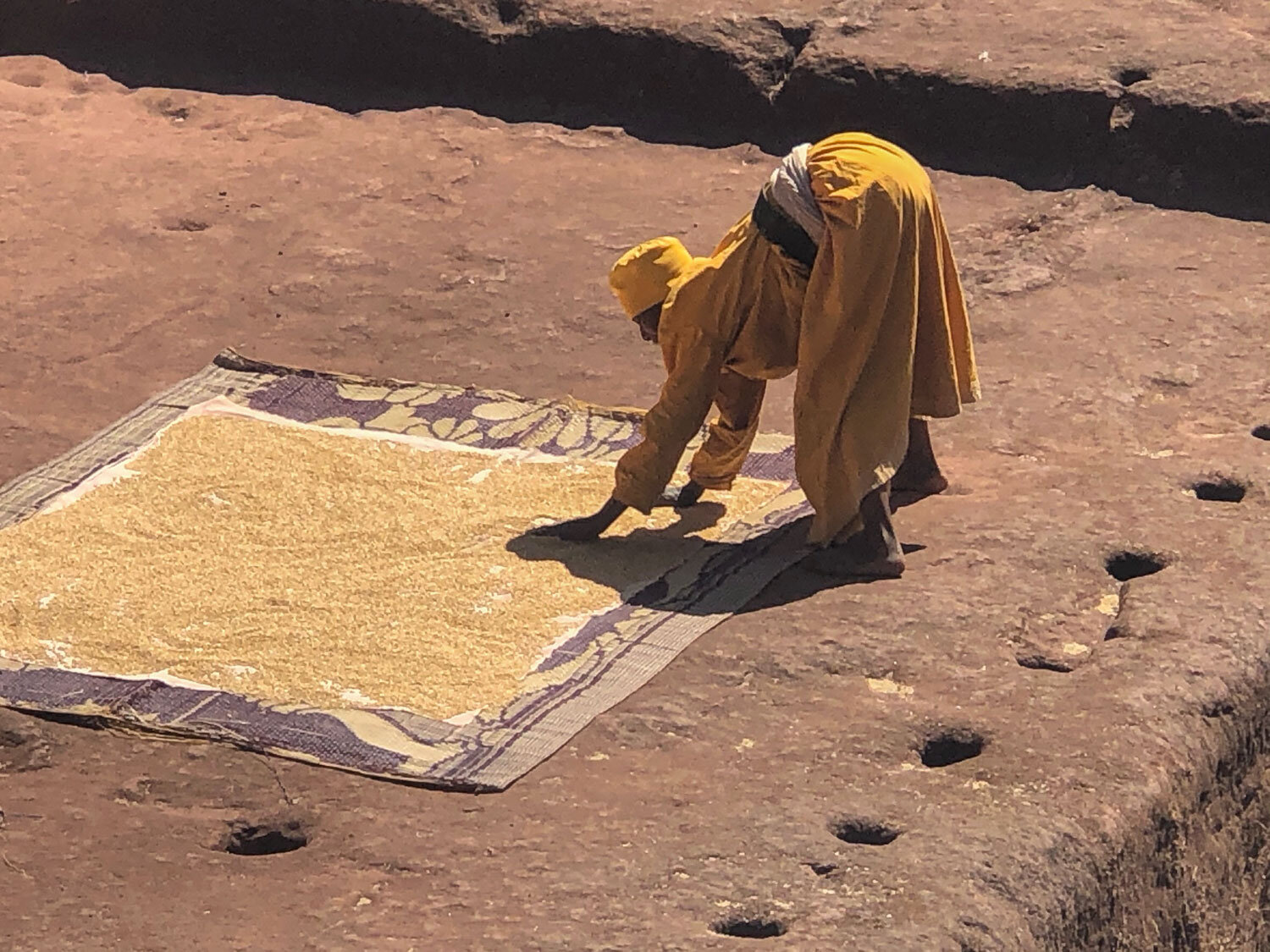
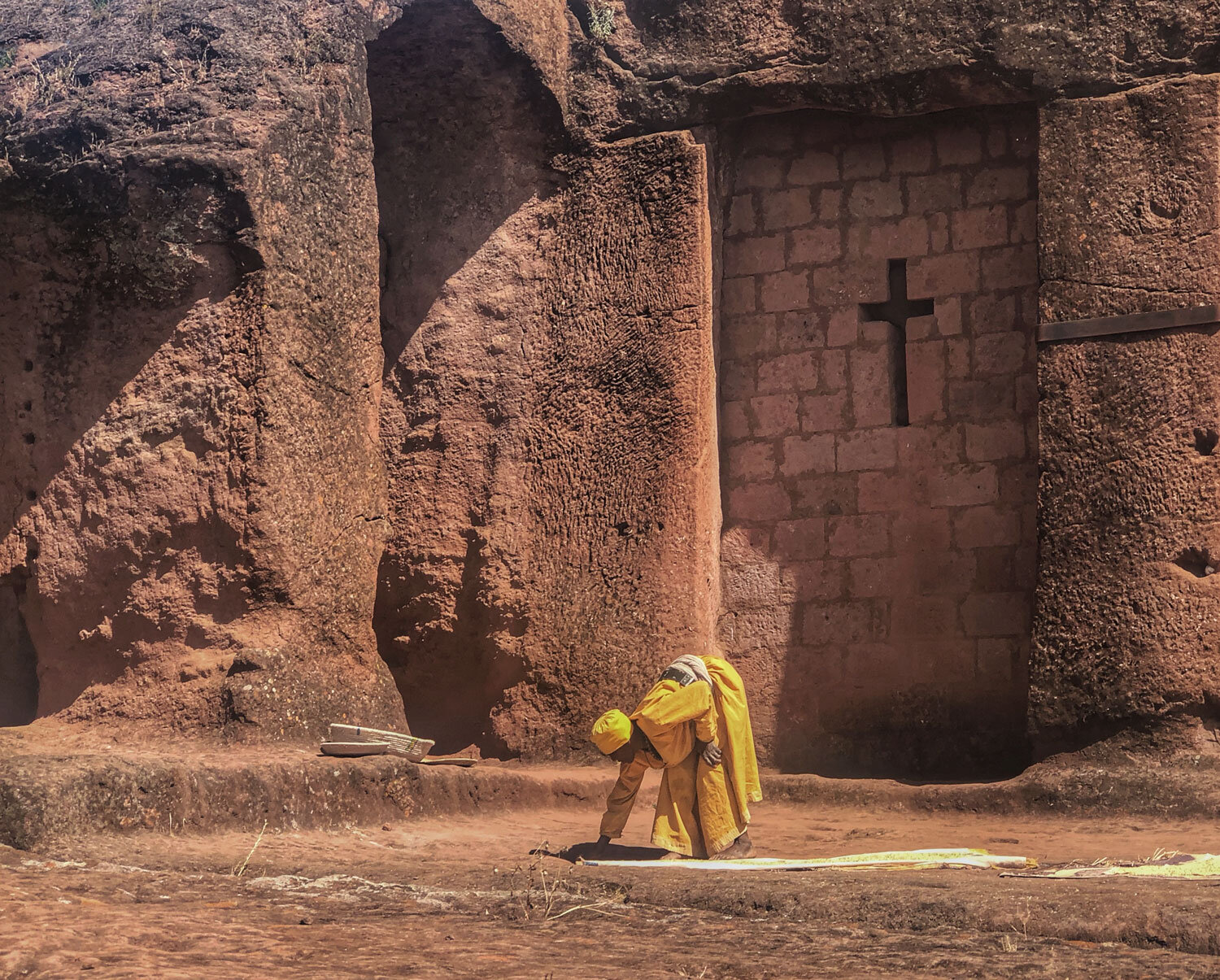
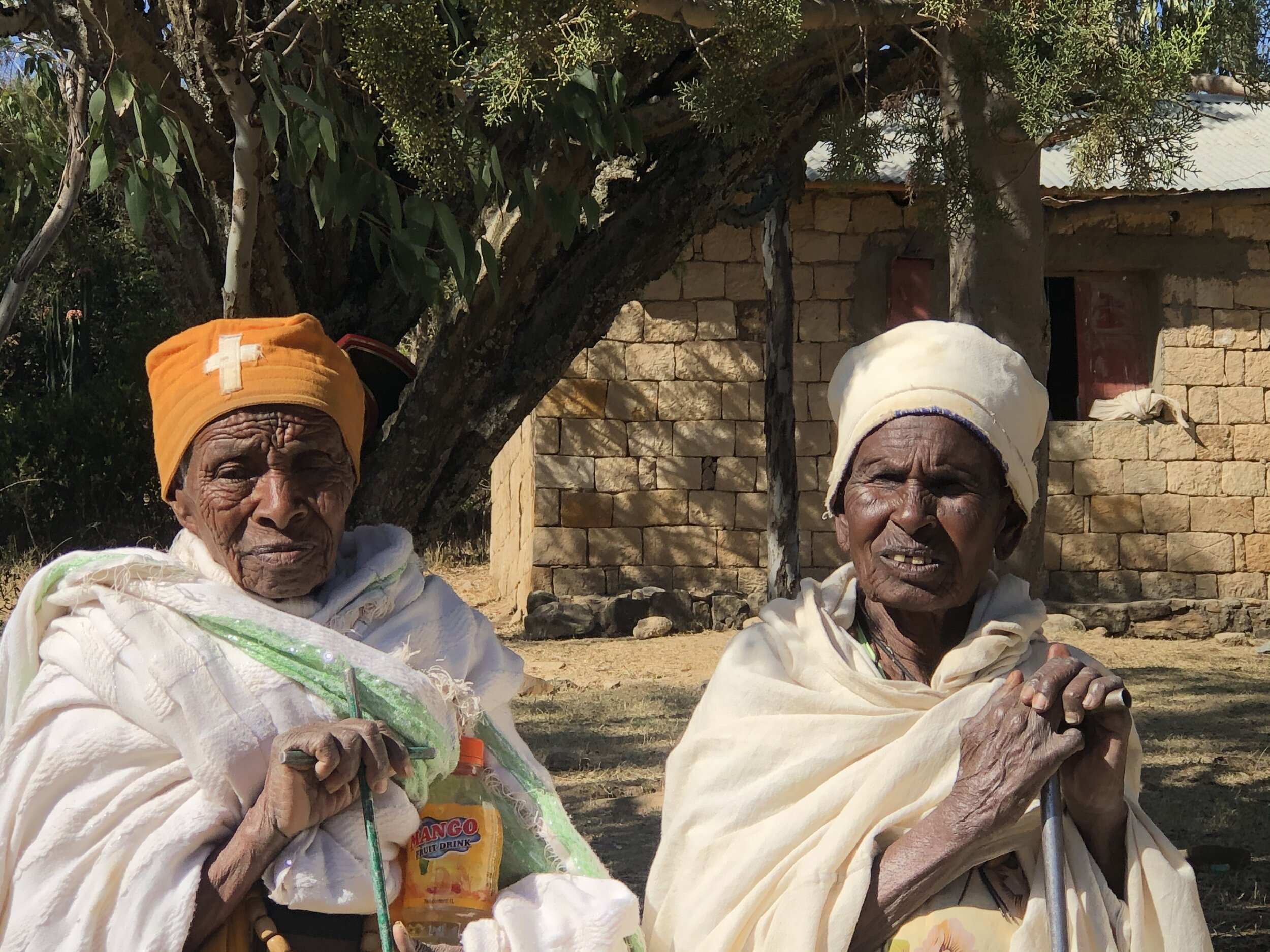

Other unusual churches and monasteries, such as the one below, are scattered throughout the land. Built into the side of a cliff, this one below had a source of water trickling down. Here, we met a less formal and I must say, more welcoming priest. With his young helper, he displayed beautifully illustrated pages of a bible written in ancient Amharic or Ge’ez, a script dating back to the 3rd century.


